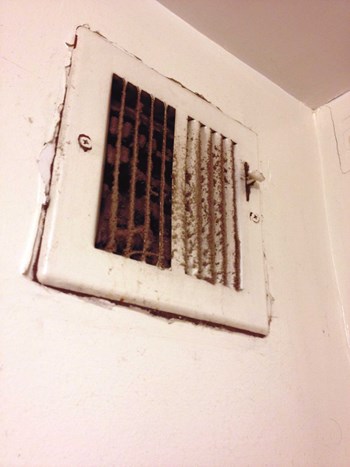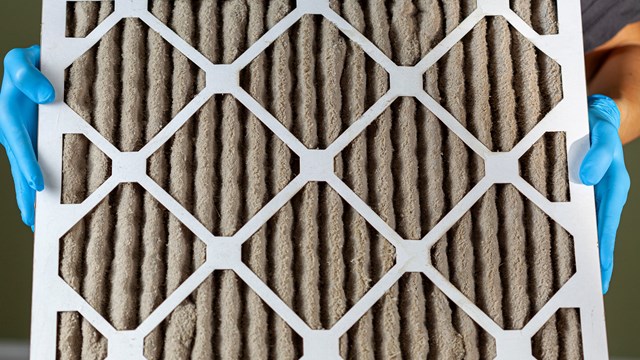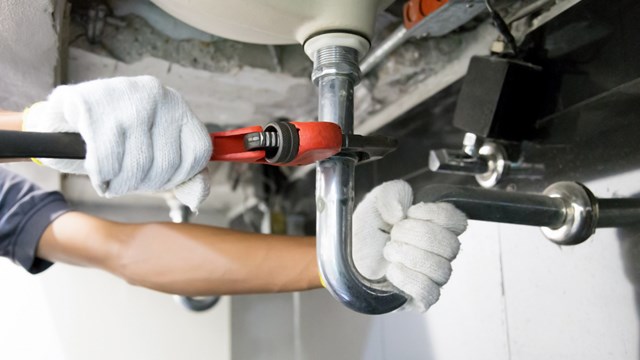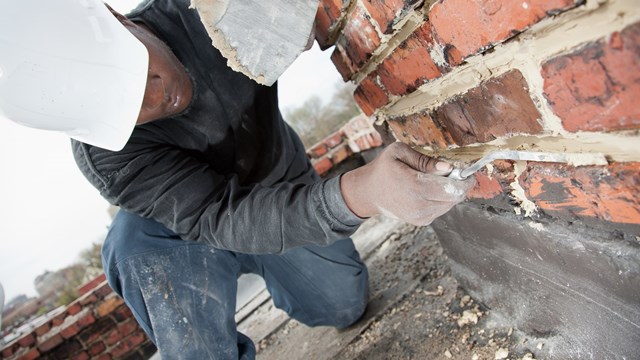
Few things are as important to our health and well-being as the air we breathe, especially inside our own homes. That is why it is so important for individual homeowners as well as management to stay up-to-date on issues of indoor air quality and ensure that everything possible is done to provide a healthy environment.
Given the broad range of issues that can come to the fore, it is not always easy to control indoor air quality. Routine maintenance includes making sure the water filtration systems on air-cooled units are up to date, and doing “whatever is required by the manufacturer” to keep all equipment and systems running smoothly.
What Can Go Wrong
The two most common indoor air quality issues that can arise are “radon and damp indoor spaces,” says Jennifer Hammonds, press secretary for the Florida Department of Health Office.
According to the U.S. Environmental Protection Agency (EPA), radon is a natural radioactive breakdown of uranium in soil, rock and water. It is found all over the U.S. and can get into any type of building, including homes. Although it can infiltrate a home through well water, it is usually found in basements, having leaked through cracks in a building’s foundation. The radon then gets trapped inside the building, causing what can be a build-up to dangerous levels.
Radon has no odor or taste, and can only be identified through special detection devices. It is vitally important to have a detection device in place because radon is a proven carcinogen. The EPA cites the U.S. Surgeon General’s warning that radon is, in fact, the second leading cause of lung cancer in the United States today. Needless to say, preventing radon leaks is extraordinarily important in keeping air quality safe inside a home.
“To avoid the risks associated with excessive levels of radon, we recommend that each home be tested for radon levels,” Hammonds says. “Radon can be measured with a short-term or long-term do-it-yourself kit, starting at about $15 dollars or by hiring a Florida Department of Health certified radon professional. If the levels are above the action level, we recommend that these levels be reduced by proven mitigation techniques.” Those mitigation techniques should be undertaken by a radon professional to ensure the most successful remediation. A list of certified professionals can be found on the Florida Department of Health website.
Damp indoor spaces are a threat to indoor air quality because, according to the Centers for Disease Control and Prevention (CDC), moisture supports the growth of bacteria and fungi. Health issues that can arise as a result of mold include allergies; hypersensitivity pneumonitis, which can be mistaken for pneumonia but which does not get better with antibiotics; and asthma. “To avoid the risks associated with damp indoor spaces, we recommend that folks actively monitor for dampness indicators and address problems as quickly as possible,” Hammonds adds.
In the case of dampness caused by water damage, Hammonds says homeowners always should be mindful of the potential for mold growth that can stem from roof leaks or pipe leaks, and should immediately repair that damage to prevent mold.
And it is important to pay attention to the warning signs when it comes to mold and spore growth. “If you can smell mold,” says Kevin Veach of Green Energy Options in Greenville, Florida, “you’ve got it and need to get rid of it. More importantly, you need to find the cause of the mold problem—usually the source of moisture—and correct it.”
Spotting Common Problems
Of course, knowing that problems can exist with a building’s air quality and knowing whether or not those problems actually exist within our own buildings or homes are two different questions.
One key step, though, is to be vigilant when it comes to maintenance, says one Tampa-based property manager. “The key to keeping any problems from starting is doing your maintenance and doing what needs to be done on a regular basis,” she says. She finds that the buildings under her company’s care have not had any issues with air quality and she credits that to a successful upkeep program. “Normal maintenance we find, keeps those problems at bay.” And, she says, taking care of problems before they start ensures “that you’ll certainly be in a better frame for handling any issues that do arise.”
Hammonds suggests there are a number of signs to keep in mind when analyzing the health of your home. “Does the building feel damp to your skin?” Hammonds says. “Does the air feel pleasant to breathe or does it seem stagnant? Do you notice an unexplained odor when you enter the home or a specific room? Do you see signs of dampness, a flood, a leak, water stains, mold growth? If one notices these problems, there might be an indoor air quality problem.”
On the other hand, simply relying upon one’s senses often will not do the job when it comes to ensuring good air quality. “For example, people do not have the capability of sensing the presence of radon and carbon monoxide since both are colorless and odorless,” Hammonds says. “In the case of radon, one must test the home or building to determine the level present. In the case of carbon monoxide, a carbon monoxide alarm can alert you to life-threatening levels.”
And sometimes the very equipment we use to help make our indoor experiences better can be the air quality culprit. An odor, for example, can come from air conditioning equipment or ductwork. It helps to remember that a building is a system. “If you look at it as a system you can better determine what might be causing indoor air quality problems,” Veach adds. “For example, a carbon monoxide problem could be caused by a defective combustion appliance or it could be caused by a building envelope or ventilation problem that causes the building to suck flue gases down the flue rather than letter them escape safely up the flue.”
Hammonds agrees. “If either a combustion appliance malfunctions or the HVAC system is poorly maintained, indoor air quality can suffer significantly. The primary hazard associated with malfunctioning combustion appliances is carbon monoxide.” In addition, “the primary contaminant associated with poorly maintained HVAC systems is microbiological: the growth of fungi or bacteria, the dispersion of easily inhaled particles, damp indoor spaces and carbon monoxide, if combustion appliances are present.”
Ensuring that good testing devices are in place is paramount. “One thing we can do on a routine basis is to purchase and install at least one carbon monoxide alarm in our home,” says Hammonds. She adds that the batteries in the alarm should be replaced and the auditory alarm circuitry test button checked at least once a year. The Florida Department of Health recommends that carbon monoxide alarms be replaced as specified by the manufacturer or every five years since the gas sensors have a limited effective lifespan.
Hammonds also suggests that “all combustion appliances and heating, air-conditioning and ventilation systems be inspected once a year by a licensed professional.”
In order to prevent the ill effects of an overly damp home or unit, Hammonds says that an indoor gauge for relative humidity can be helpful. “Floridians should maintain their relative humidity below 60 percent at all times. Fifty percent relative humidity is even better. Keeping the relative humidity at or close to 50 percent can help to reduce the likelihood of condensation on interior surfaces, indoor mold growth and retard dust mite population growth. A relative humidity gauge—sometimes also called a thermo hygrometer—can be purchased at electronic stores, hardware stores, home improvement stores and other retailers.”
Don’t Go Overboard
As important as it is to keep the air we breathe as clean and pure as possible, it is vital to our mental health to remember that there is no such thing as a spotless environment. “There really is no place we can go that is free of all allergens, toxins or gases,” says Hammonds. “Allergens surround us at all times. The best we can hope for is to manage any allergenic disease with the assistance of health care professionals, control the sources of allergens—pets, pests and mold growth—by removing the sources from the home or reducing our exposure to them. We do not know of any inspection schedule that ensures good indoor air quality.” So be mindful, but do not overreact.
For example, Hammonds says, “We recommend against measuring indoor microorganisms—bacteria, fungi, etc.—or using the presence of specific microorganisms to determine the level of health hazard or the need for urgent remediation. Rather, we strongly recommend addressing water damage, dampness, visible mold, and mold odor” by identifying and fixing the problems. So don’t get caught up in specific measurements and evaluations if the problem is sitting front and center in need of attention.
In short, when it comes to maintaining a healthy indoor environment and finding a way to feel confident in the air we breathe, proper monitoring and quick maintenance and repair are imperative. Stay clean, keep dry, follow maintenance standards and then, just breathe easy.
Liz Lent is a freelance writer and a frequent contributor to The South Florida Cooperator.






Leave a Comment